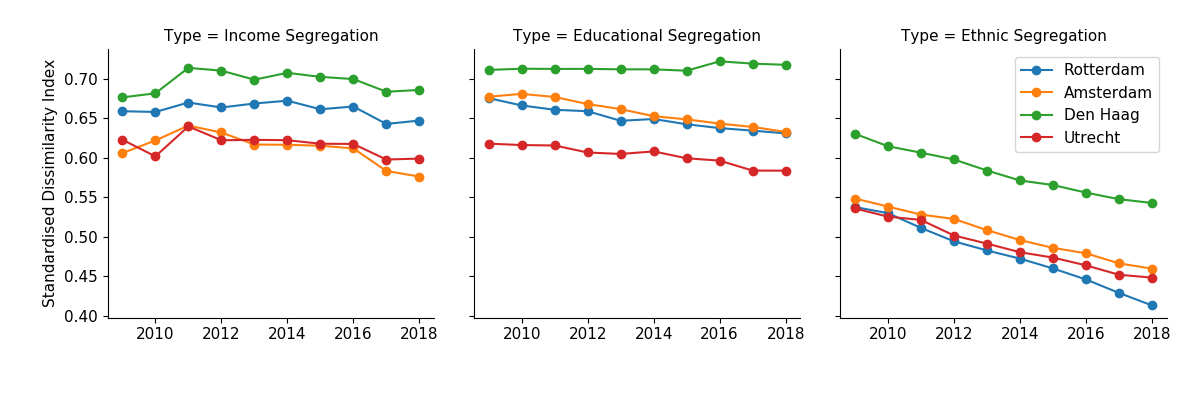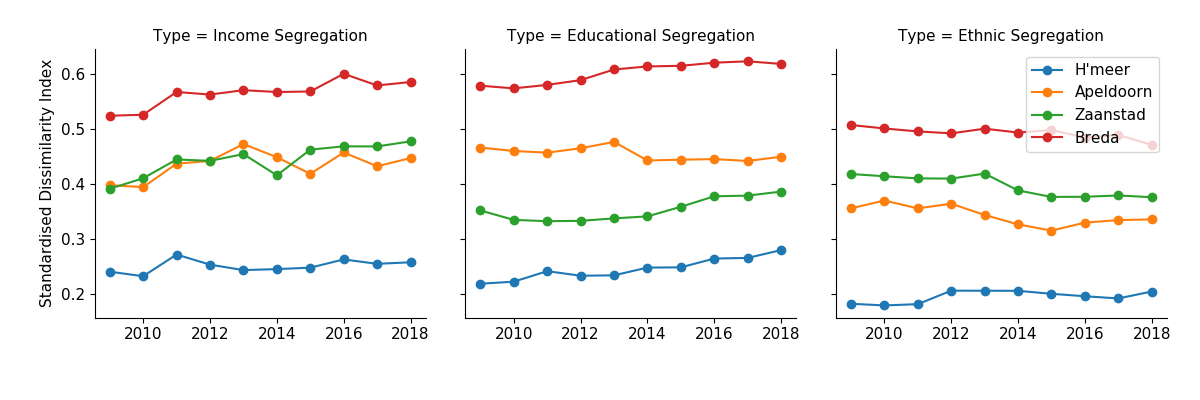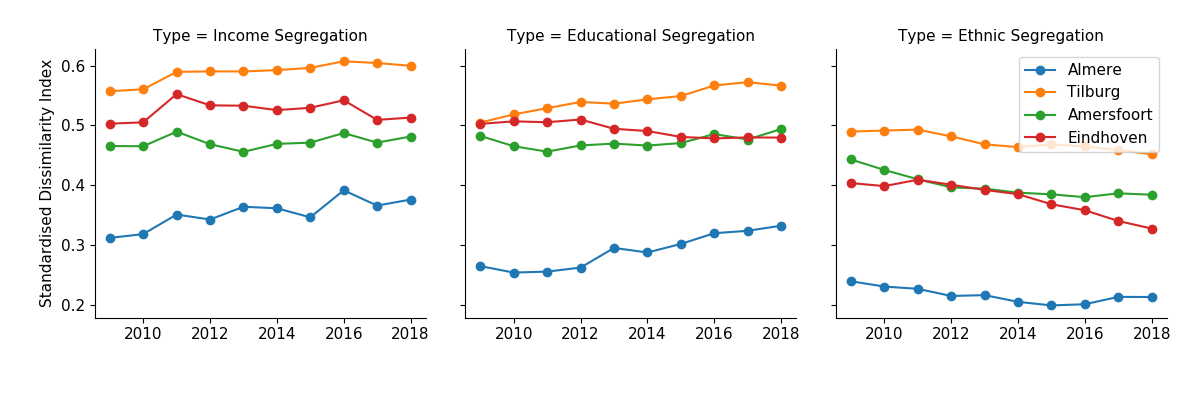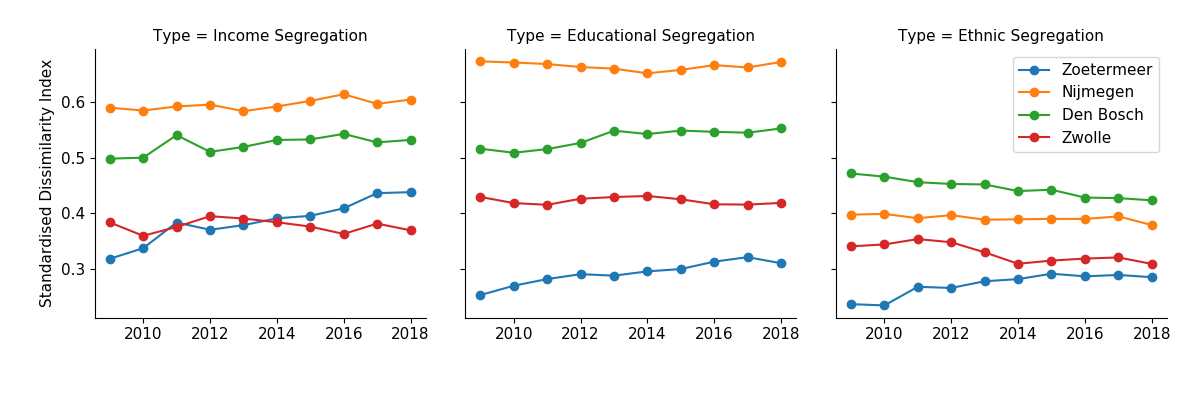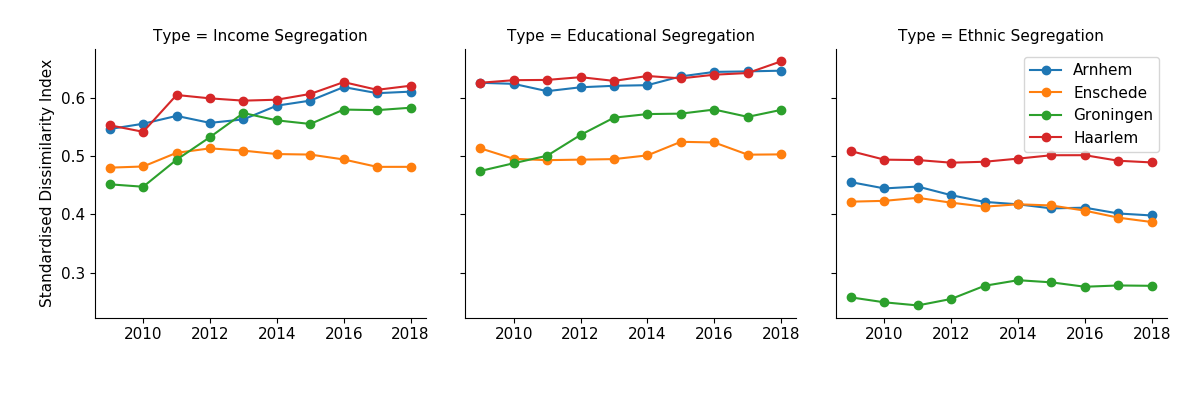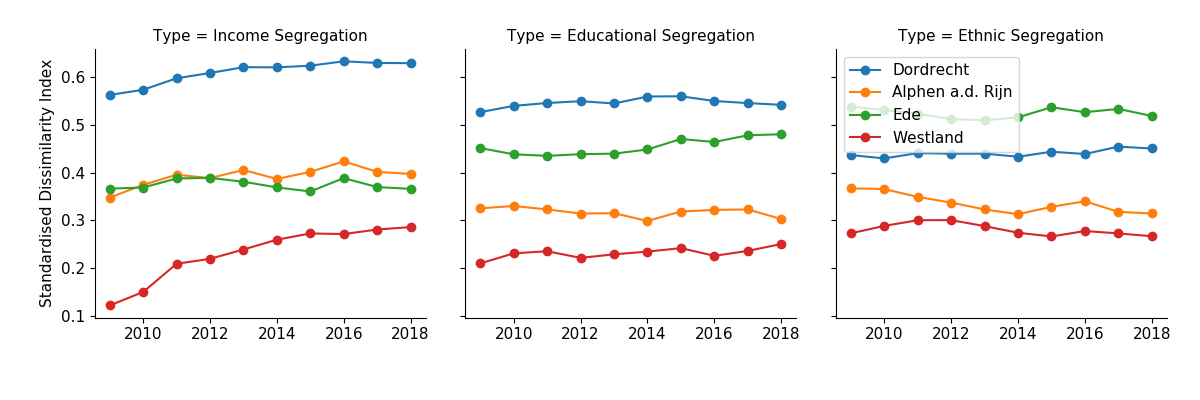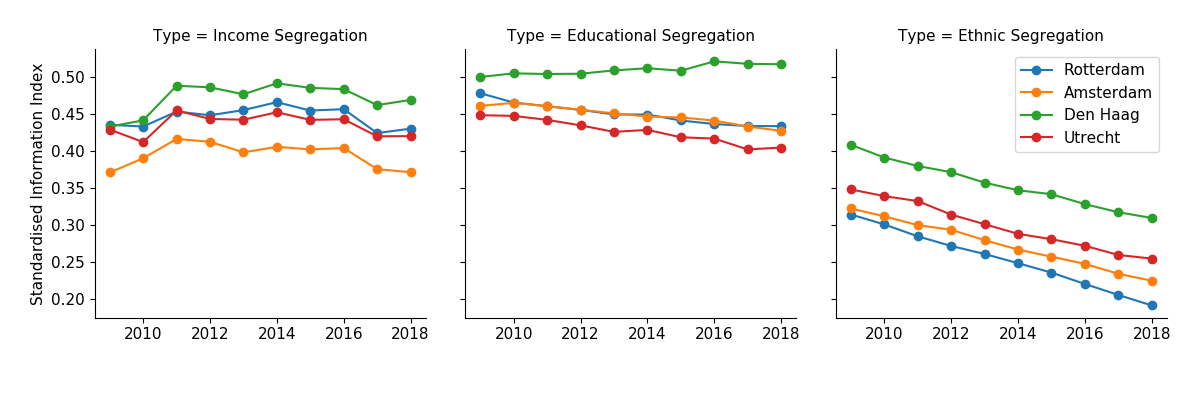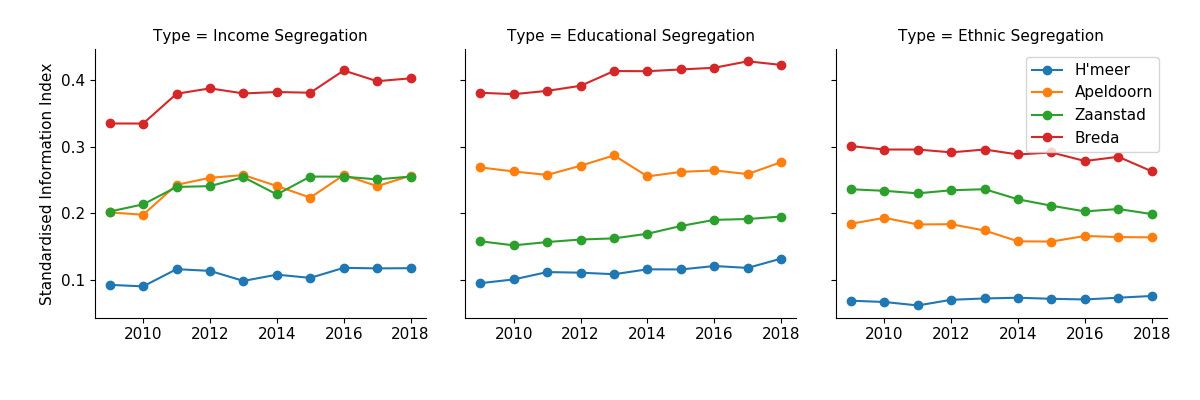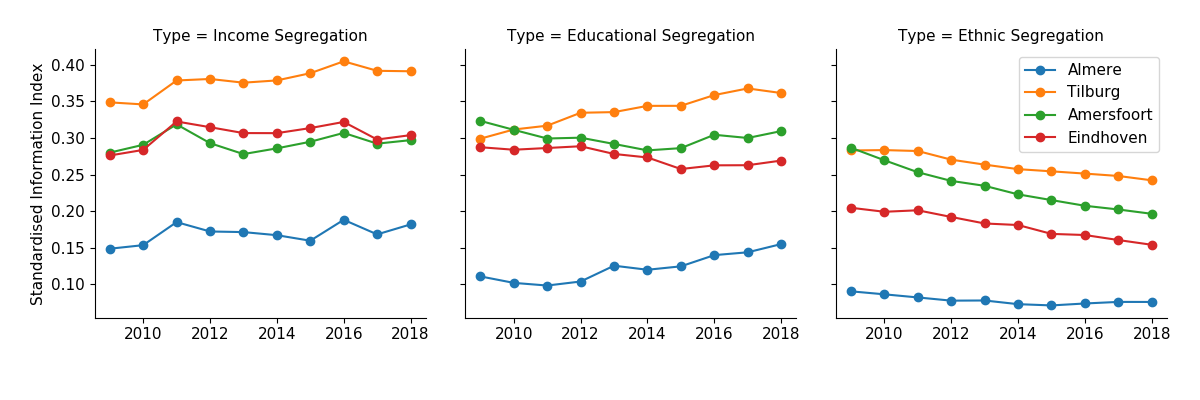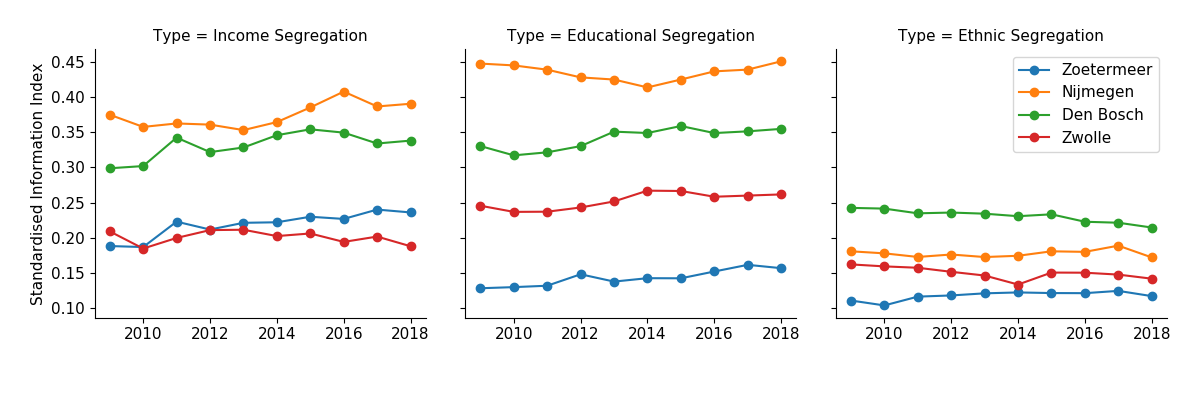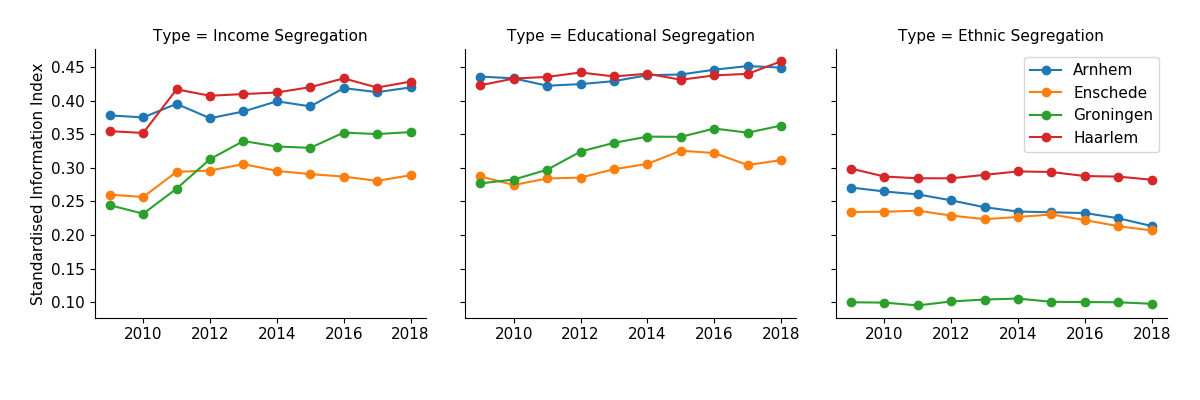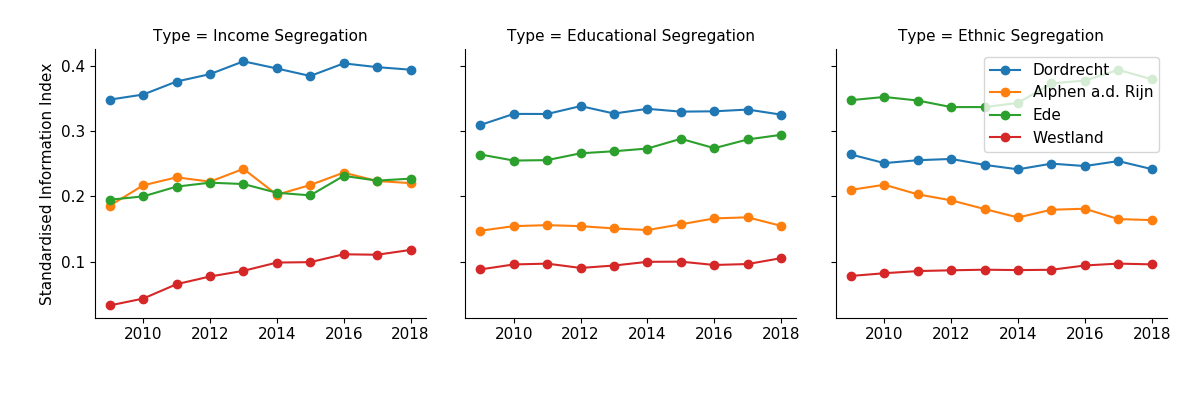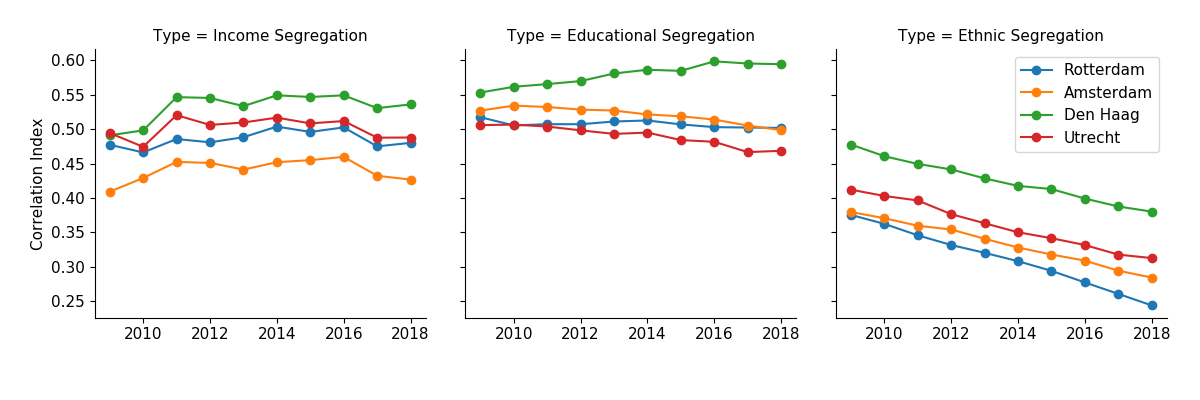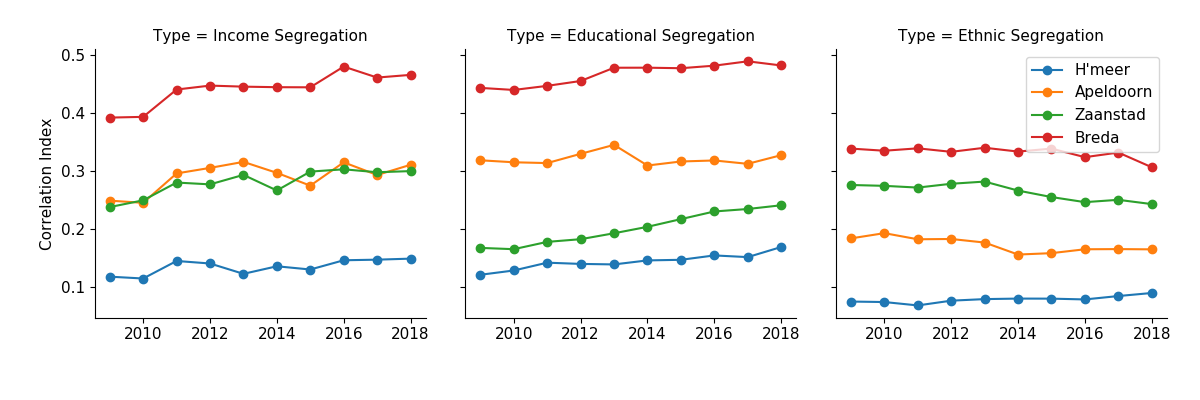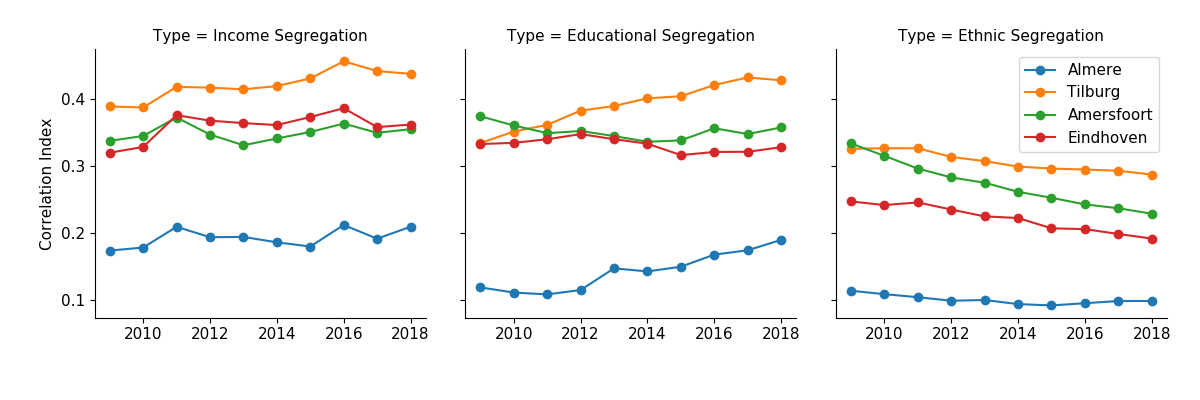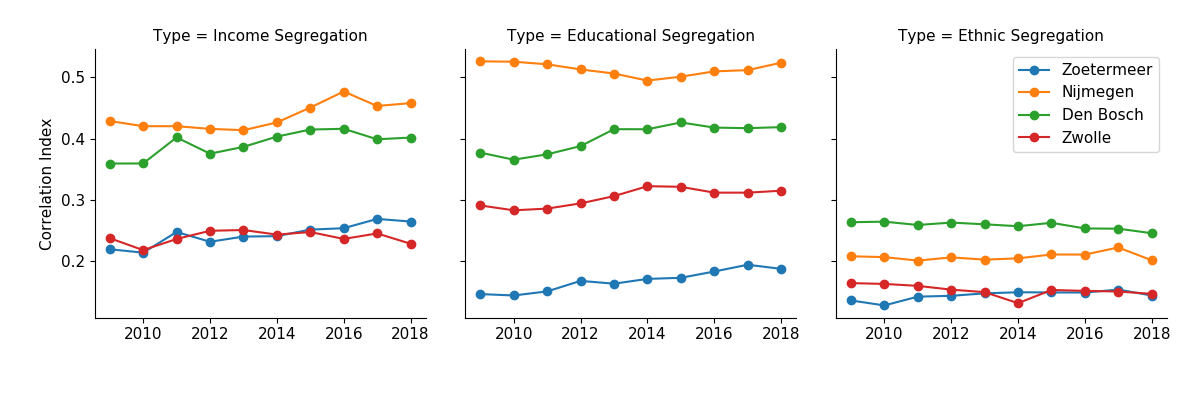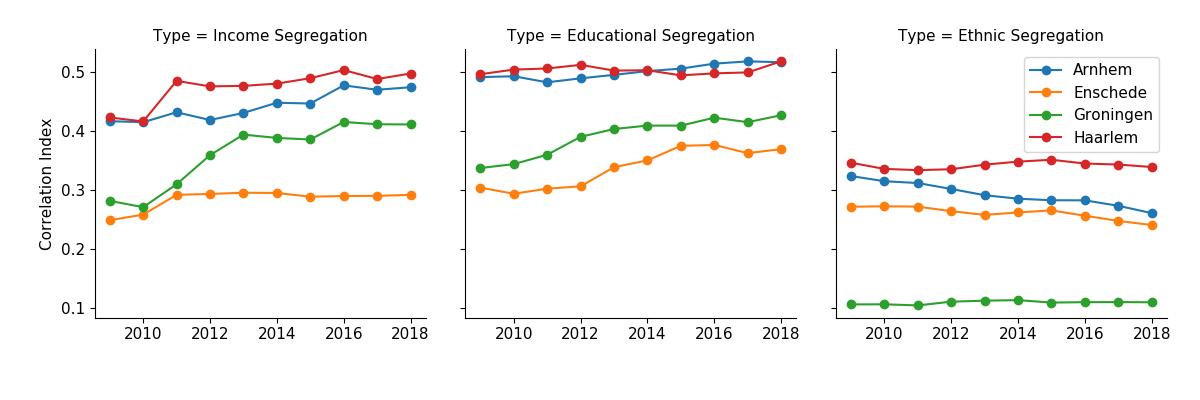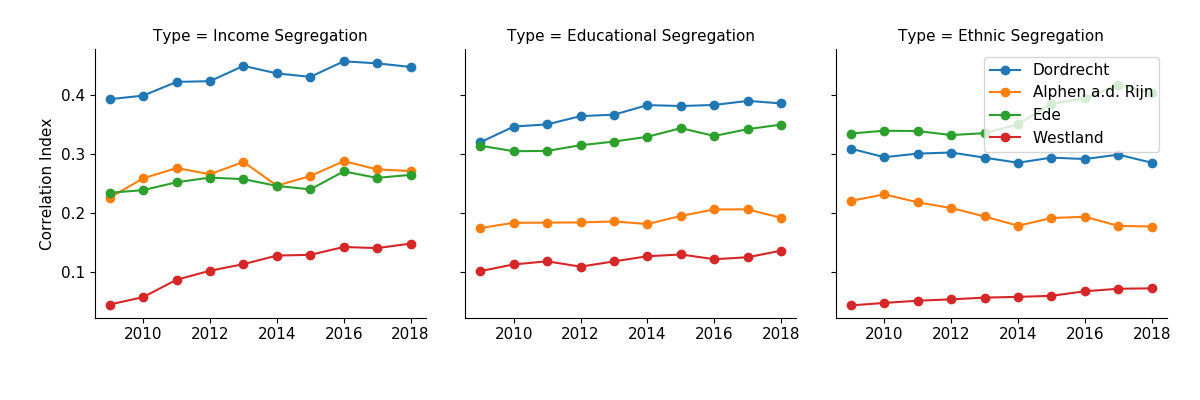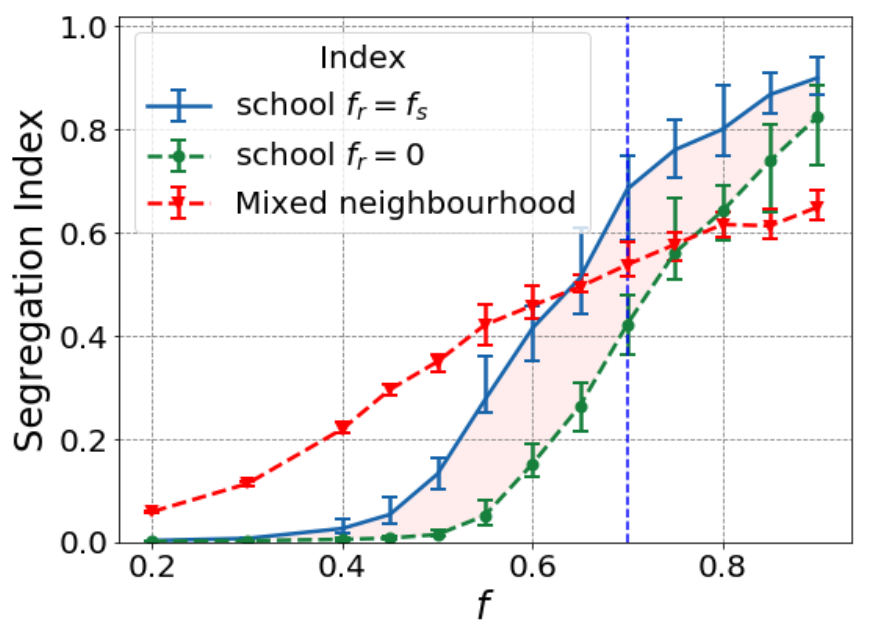Primary School Segregation in the Netherlands
School segregation, often measured as the uneven distribution of pupils with different characteristics (e.g., ethnicity, religion, gender, income, age, social class), is widely associated with the reproduction of inequalities across these characteristics and is considered a major societal problem (Boterman, 2019). In the 24 largest municipalities of the Netherlands, primary school segregation based on ethnicity* seems to show a decreasing trend for 2009-2018 whilst the absolute level is still substantial in 2018 (e.g., Dissimilarity Index greater than 0.4 for 15 out of 24 municipalities). However, primary school segregation based on income** and educational level*** are almost always exceeding the levels of ethnicity for the municipalities. Additionally, these levels seem to be quite stable through 2009-2018, whilst in some municipalities with initially low levels of school segregation based on income there are signs of an increasing trend.
Note that the starting point on the vertical axis might vary between figures for visibility purposes, hence, be careful in the comparison of different plots. Moreover, indices are standardised (Carrington & Troske, 1997) to allow for comparison between cities with different group proportions and reduce randomness. The standardised Dissimilarity measure is used as main index, while the other two serve as additional indices for robustness.
* Native Dutch children are compared with Non-Western (see the CBS for the exact definition).
** Children from parents belonging to the 20% highest incomes in the Netherlands are compared to those of the lowest 20% incomes.
*** Parents with at most a MBO2 education level versus at least one parent having an HBO Associate Degree, HBO Master or higher.
Residential Patterns and School Segregation
Within the school choice literature, two factors that are consistently found to influence the level of school segregation are distance and the socio-economic or ethnic composition of a school (Boterman, 2019; Karsten et al., 2003). More specifically, if neighbourhoods consist of particular groups of people (i.e., residential segregation) and parents have a tendency to choose a school nearby, one can expect these residential patterns to, partially, portray in schools as well (Boterman, 2019). Moreover, socio-economic and ethnic segregation in Dutch cities is observed to be consistently higher for schools than for neighbourhoods. This difference is often attributed to parents being less tolerant for the socio-economic or ethnic composition of a school than that of their neighbourhood (Boterman, 2013).
However, using an Agent-Based Model (ABM), simulating both residential- and school choice, a different explanation is offered. Within this artificial society, households belong to one of two groups and continue to make a residential choice until they are all satisfied with their neighbourhood composition. When settled, these households choose a school according to a trade-off between distance and group composition of the schools. Even with the same preference for the group composition of the neighbourhood as in the school (i.e, being as tolerant), it is shown that the level of school segregation resulting from simulations with residential patterns (blue line, i.e., neighbourhoods are already segregated) surpasses that of simulations without residential patterns (green line). This result is ascribed to the minority of a neighbourhood already facing an unfavourable school composition due to residential segregation and are willing to travel further for a school that has a more favourable one. Moreover, this gap is also observed when using an explicit measure of residential segregation (i.e., the blue versus red line), as in reality one cannot observe school segregation with and without residential patterns.
References
Boterman, W. R. (2019). The role of geography in school segregation in the free parental choice context of dutch cities. Urban Studies.
Carrington, W. J., & Troske, K. R. (1997). On measuring segregation in samples with small units. Journal of Business & Economic Statistics, 15(4), 402-409.
Karsten, S., Ledoux, G., Roeleveld, J., Felix, C., & Elshof, D. (2003). School choice and ethnic segregation. Educational policy, 17(4), 452-477.
Reardon, S. F., & Firebaugh, G. (2002). Measures of multigroup segregation. Sociological methodology, 32(1), 33-67.
Reardon, S. F., & O’Sullivan, D. (2004). Measures of spatial segregation. Sociological methodology, 34(1), 121-162.
Ruijs, N., & Oosterbeek, H. (2019). School choice in Amsterdam: Which schools are chosen when school choice is free?. Education Finance and Policy, 14(1), 1-30.
Vedder, P. (2006). Black and white schools in the Netherlands. European Education, 38(2), 36-49.
Wilson, D., & Bridge, G. (2019). School choice and the city: Geographies of allocation and segregation. Urban Studies, 56(15), 3198-3215.
